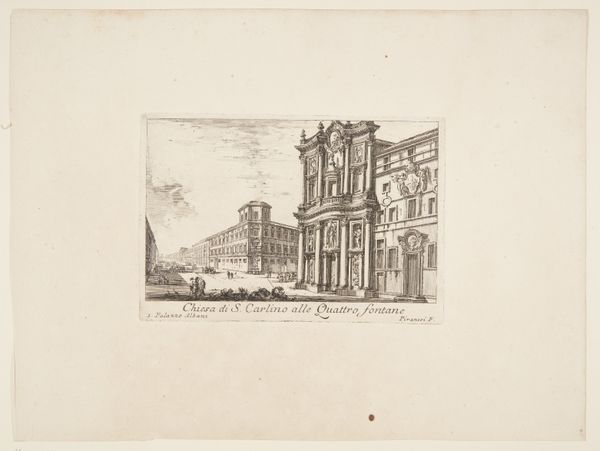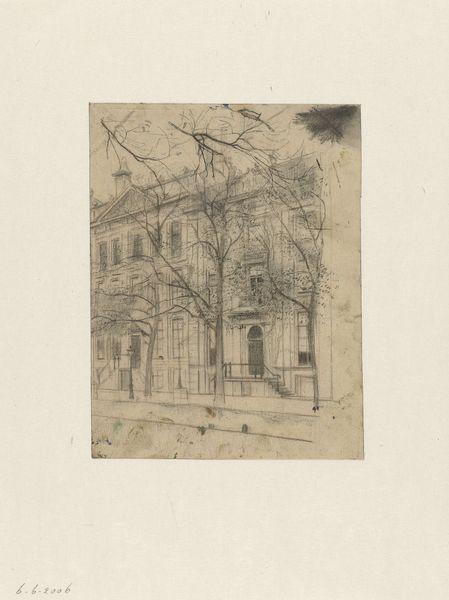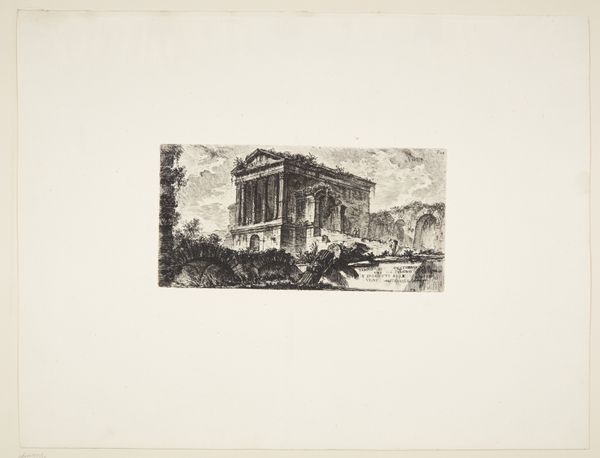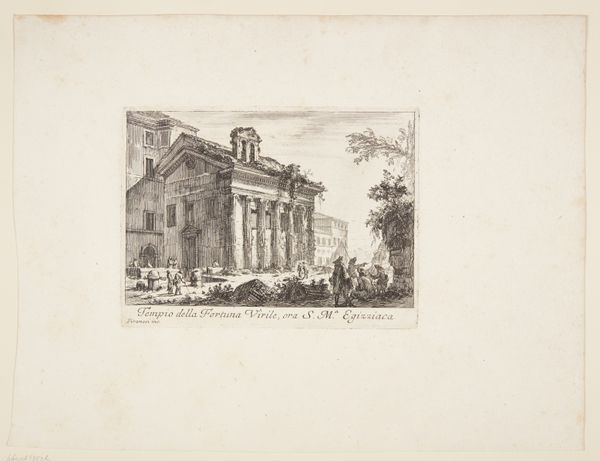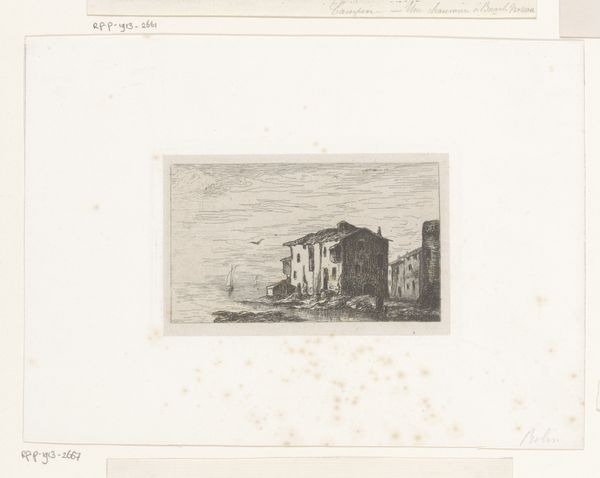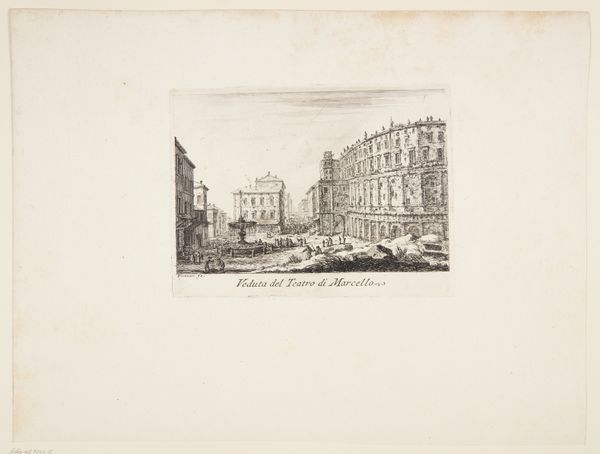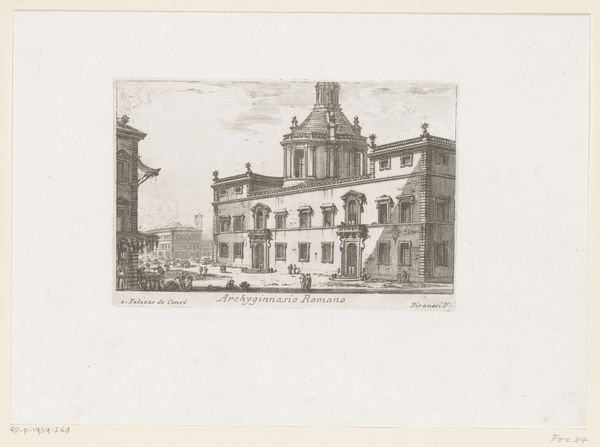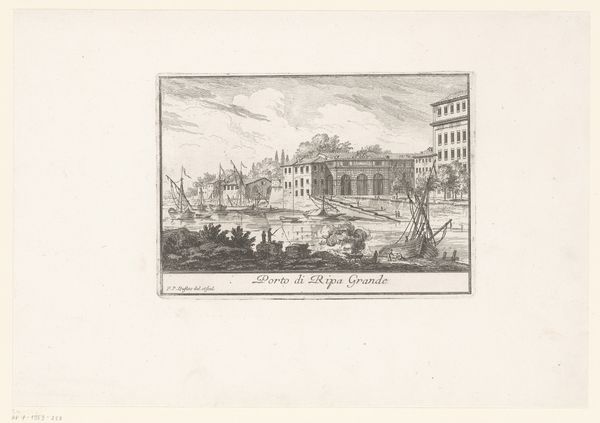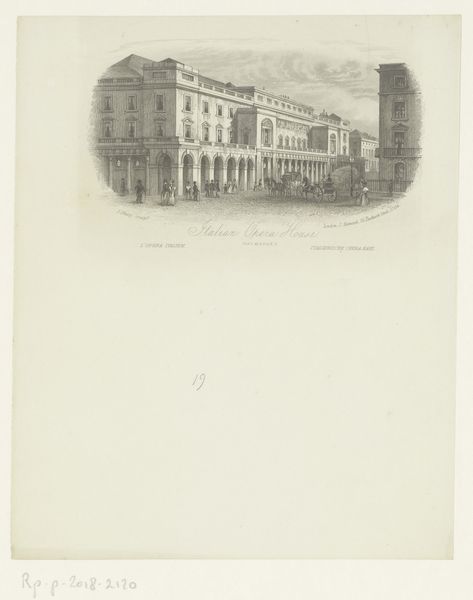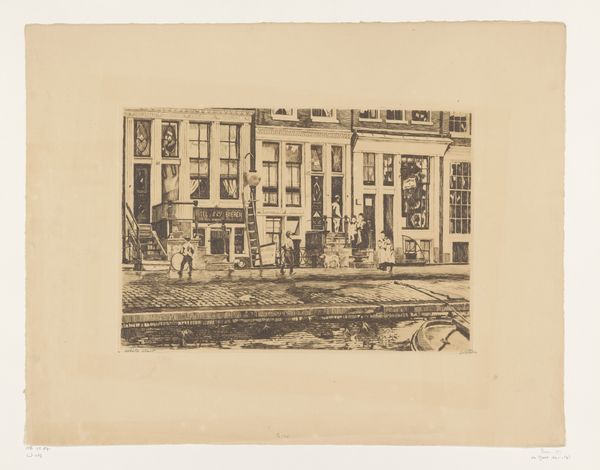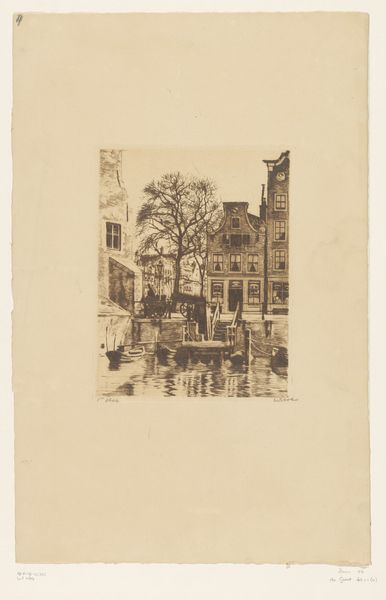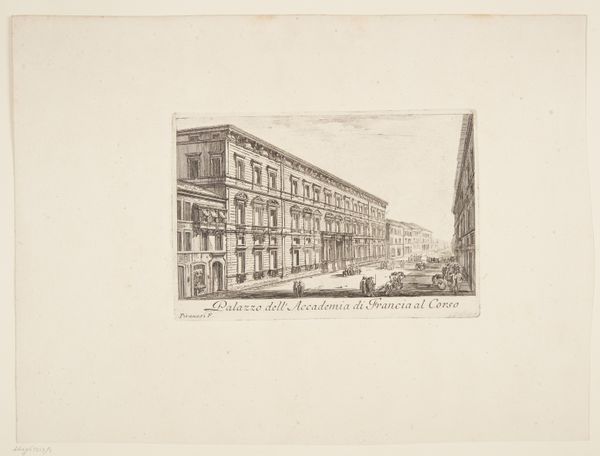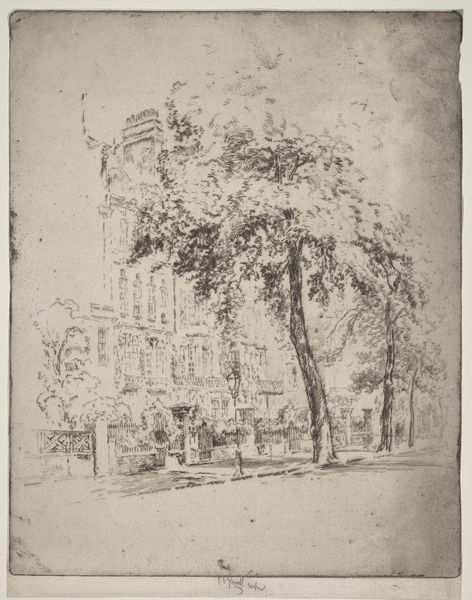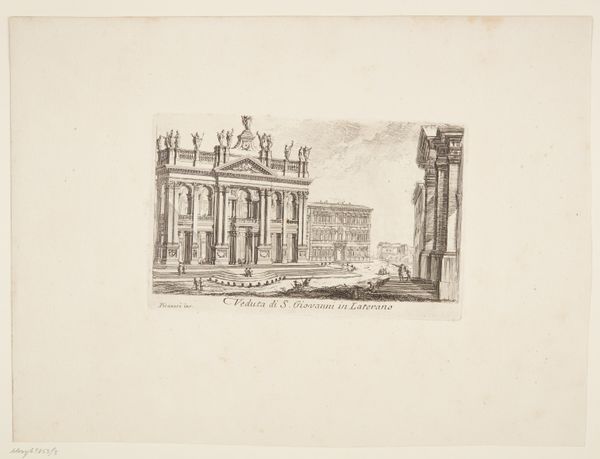
Dimensions: 158 × 145 (image, including stray marks); 162 × 145 mm (plate); 263 × 217 mm (sheet)
Copyright: Public Domain
Curator: Looking at Charles Meryon’s 1865 etching, "The Admiralty, Paris", one is struck by its complex detail and historical presence. It's currently held in the collection of the Art Institute of Chicago. Editor: It's quite dark, isn’t it? Almost gothic. The building looms, and there's so much happening in the sky, offsetting the human activity below. It feels charged with social tension, perhaps? Curator: Meryon was indeed preoccupied with representing the changing face of Paris during Haussmann's renovations. His prints often reflected anxieties about modernization and the destruction of the city's historical fabric, a deep romantic undercurrent indeed. The etching captures the grandeur of the Admiralty juxtaposed with a sense of encroaching modernity. Editor: The choice of etching is perfect, isn’t it? Such meticulous labor, forcing an intensity that aligns perfectly with that creeping feeling. What's with the swirling figures in the sky? It looks like Meryon has etched a ghostly carnival happening in the upper register, an ethereal materialization that mirrors the terrestrial activity in a most disquieting way. Curator: Those figures are a curious aspect, open to interpretation. Some say they reflect the anxieties and unrest brewing in Parisian society at the time. Meryon had a troubled life, including mental illness. Perhaps this reflects his internal world projected onto the cityscape. It would fit with the role artists held then to depict or shape public morality through narrative. Editor: Troubled, yes, yet masterfully articulate with his lines. Notice how he contrasts the permanence of the Admiralty building, rendered with sharp detail, with the frenetic energy of the figures below and above, which are less defined. It’s almost as if he's commenting on the instability of progress, using material, technique, and perspective to reinforce his view of what is worth preserving, of valuing slow labor against change and the alienation he must have perceived. Curator: Exactly, his dedication to truthfully rendering the architectural details showcases his respect for the history embodied in the city's structures and the material means by which culture endures. The building becomes more than just stone; it’s a historical anchor. Editor: Seeing it that way adds a powerful layer to the experience. It's more than just a building; it's a silent observer of societal shifts. Thank you for this insight. Curator: My pleasure. It is in that intricate weaving of technique and perspective that we can start to unpack not just what the artist represents, but why and for whom he represents it.
Comments
No comments
Be the first to comment and join the conversation on the ultimate creative platform.
